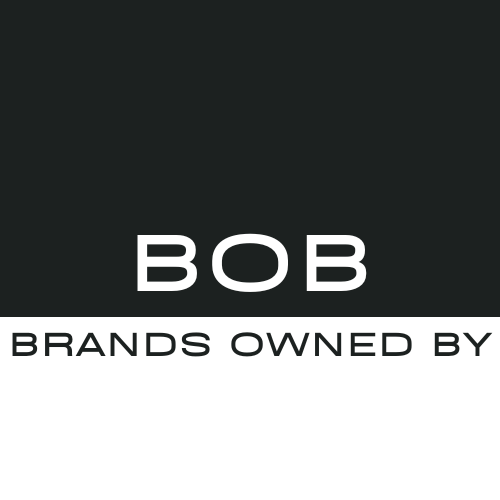Pottery Barn, a beloved home furnishing brand, is known for its stylish and high-quality products.
But who owns Pottery Barn?
The brand is part of a larger conglomerate, and its ownership structure reflects its position in the retail industry.
In this article, we’ll explore the history, ownership, and key details about Pottery Barn including its shareholders, market position, and brands under its umbrella.
Pottery Barn History
Pottery Barn was founded in 1949 by Paul Secon and his brother Morris in West Chelsea, New York.
Initially, the company sold discounted pottery and home decor items.
Over the years, it evolved into a premium lifestyle brand, offering furniture, bedding, and home accessories.
In 1986, Pottery Barn was acquired by Williams-Sonoma, Inc., a move that significantly expanded its reach and product offerings.
Today, Pottery Barn operates as a subsidiary of Williams-Sonoma, Inc., and has become a household name in the home furnishing industry.
Who Owns Pottery Barn: Ownership Details
Pottery Barn is owned by Williams-Sonoma, Inc., a publicly traded company listed on the New York Stock Exchange (NYSE: WSM). Williams-Sonoma, Inc. is the parent company and the largest shareholder of Pottery Barn.
The ownership of Williams-Sonoma, Inc. is distributed among institutional investors, mutual funds, and individual shareholders.
List of Shareholders
Williams-Sonoma, Inc., the parent company of Pottery Barn, is publicly traded on the New York Stock Exchange (NYSE: WSM). Its ownership is distributed among institutional investors, mutual funds, and individual shareholders. Here’s a deeper look at the major shareholders:
1. The Vanguard Group, Inc.
- Percentage Held: Approximately 12.5%
- Role: The Vanguard Group is one of the largest asset management firms globally, managing over $7 trillion in assets. As a major shareholder, Vanguard’s investment in Williams-Sonoma, Inc. reflects confidence in the company’s long-term growth potential. Vanguard typically takes a passive approach, focusing on steady returns rather than direct involvement in day-to-day operations.
- Influence: While Vanguard does not directly control the company, its significant stake gives it a voice in major decisions, such as board appointments and strategic initiatives.
2. BlackRock, Inc.
- Percentage Held: Around 10.8%
- Role: BlackRock is another giant in the asset management industry, with over $9 trillion in assets under management. Like Vanguard, BlackRock is a long-term investor in Williams-Sonoma, Inc. Its stake ensures that the company remains focused on sustainable growth and shareholder value.
- Influence: BlackRock’s sizeable holding allows it to engage with the company on environmental, social, and governance (ESG) issues, pushing for responsible business practices.
3. State Street Corporation
- Percentage Held: About 5.2%
- Role: State Street Corporation is a leading financial services provider and the third-largest institutional shareholder of Williams-Sonoma, Inc. It manages a wide range of investment funds, including index funds that track the performance of major stock indices.
- Influence: State Street’s involvement ensures that Williams-Sonoma, Inc. adheres to corporate governance best practices and maintains transparency with its shareholders.
4. Insiders and Executives
- Percentage Held: Less than 1% collectively
- Role: Company executives, including CEO Laura Alber and other board members, hold a small percentage of shares. This aligns their interests with those of the shareholders, as their personal wealth is tied to the company’s performance.
- Influence: While their ownership percentage is small, insiders play a critical role in shaping the company’s strategy and day-to-day operations.
Market Share and Competitors
Pottery Barn operates in the highly competitive home furnishing market, which is valued at over $200 billion globally. The brand has carved out a niche in the premium segment, offering high-quality, stylish furniture and home decor. Here’s a detailed look at its market position and key competitors:
Market Share
Pottery Barn holds an estimated 5-7% share of the U.S. home furnishing market. Its focus on premium products and a loyal customer base allows it to maintain a strong position despite intense competition.
The brand’s market share is bolstered by its omnichannel strategy, which includes a robust e-commerce platform and a network of physical stores.
Top Competitors
- West Elm
- Parent Company: Williams-Sonoma, Inc. (same as Pottery Barn)
- Market Share: Approximately 4-5%
- Overview: West Elm targets a younger, design-conscious audience with modern and sustainable furniture. While it operates under the same parent company, it competes directly with Pottery Barn in the mid-to-high-end market segment.
- Crate & Barrel
- Parent Company: Otto Group
- Market Share: Around 6-8%
- Overview: Crate & Barrel is known for its contemporary designs and high-quality products. It appeals to a similar demographic as Pottery Barn, making it one of its closest competitors.
- Restoration Hardware (RH)
- Market Share: Approximately 3-4%
- Overview: RH focuses on luxury home furnishings, targeting high-net-worth individuals. Its emphasis on premium materials and exclusive designs positions it as a competitor in the high-end market.
- IKEA
- Market Share: Over 10% globally (largest player in the home furnishing market)
- Overview: IKEA dominates the affordable furniture segment with its functional and minimalist designs. While it operates in a different price range, its massive scale and global presence make it an indirect competitor to Pottery Barn.
- Wayfair
- Market Share: Around 5-6%
- Overview: Wayfair is a leading online retailer of home furnishings, offering a vast selection of products at competitive prices. Its strong e-commerce presence challenges Pottery Barn’s online sales.
Competitive Advantage
Pottery Barn differentiates itself through its brand heritage, quality craftsmanship, and timeless designs. Its ability to create a cohesive lifestyle experience, both online and in-store, helps it stand out in a crowded market. Additionally, its loyalty programs and personalized customer service contribute to its competitive edge.
Who Controls Pottery Barn?
Williams-Sonoma, Inc. controls Pottery Barn through its executive leadership and board of directors. Laura Alber, the President and CEO of Williams-Sonoma, Inc., plays a pivotal role in shaping the company’s strategy and direction. The board of directors oversees major decisions, ensuring the brand’s alignment with the parent company’s goals.
Annual Revenue and Net Worth
As of 2024, Williams-Sonoma, Inc., the parent company of Pottery Barn, continues to demonstrate strong financial performance. Here’s a breakdown of its key financial metrics:
Annual Revenue
2024 Revenue: Approximately $9.2 billion (estimated).
- Pottery Barn contributes a significant portion of this revenue, accounting for roughly 40-45% of the total.
- The brand’s revenue growth is driven by its omnichannel strategy, which combines e-commerce success with a strong brick-and-mortar presence.
- Key revenue drivers include:
- E-commerce Sales: Online sales have grown steadily, now representing over 60% of Pottery Barn’s total revenue.
- Seasonal Collections: Holiday and seasonal campaigns, such as back-to-school and winter holiday collections, consistently boost sales.
- International Expansion: Pottery Barn’s growing presence in markets like Canada, Australia, and the UK has contributed to revenue growth.
Net Worth
2024 Net Worth: Estimated at $12 billion.
- This figure reflects the company’s assets, including its brand value, intellectual property, and physical stores, minus its liabilities.
- Pottery Barn’s brand equity plays a significant role in this valuation, as it is recognized globally for its quality, design excellence, and customer loyalty.
Profit Margins
- Gross Profit Margin: Approximately 40%.
- This high margin is a result of Pottery Barn’s premium pricing strategy and efficient supply chain management.
- Operating Profit Margin: Around 15%.
- The company’s ability to control operational costs while scaling its business has contributed to healthy profitability.
Future Projections
- Analysts predict 5-7% annual revenue growth for Williams-Sonoma, Inc. over the next five years, driven by:
- Expansion into new international markets.
- Increased focus on sustainable and eco-friendly products.
- Enhanced digital capabilities, including AI-driven personalization and augmented reality (AR) shopping experiences.
Brands Owned by Williams-Sonoma, Inc.
Williams-Sonoma, Inc. owns several well-known brands, including:
- Pottery Barn – Focused on classic and timeless home furnishings.
- West Elm – Known for modern and sustainable designs.
- Williams Sonoma – A premium kitchenware and cooking brand.
- Pottery Barn Kids – Offers children’s furniture and decor.
- Rejuvenation – Specializes in lighting and hardware with a vintage aesthetic.
Each brand operates under the Williams-Sonoma, Inc. umbrella, catering to different segments of the home furnishing market.
Conclusion
Pottery Barn is a key brand under Williams-Sonoma, Inc., with a rich history and a strong presence in the home furnishing industry. Its ownership structure, led by institutional investors like The Vanguard Group and BlackRock, ensures stability and growth. With a diverse portfolio of brands and a loyal customer base, Pottery Barn continues to thrive in a competitive market.
FAQs
1. Who is the CEO of Pottery Barn?
Pottery Barn is led by Williams-Sonoma, Inc.’s CEO, Laura Alber, who oversees the entire portfolio of brands.
2. Is Pottery Barn a publicly traded company?
No, Pottery Barn is not a standalone public company. It is a subsidiary of Williams-Sonoma, Inc., which is publicly traded.
3. What is Pottery Barn’s annual revenue?
Pottery Barn contributes significantly to Williams-Sonoma, Inc.’s annual revenue, which was approximately $8.7 billion in 2023.
4. Who are Pottery Barn’s biggest competitors?
Pottery Barn’s main competitors include West Elm, Crate & Barrel, Restoration Hardware, and IKEA.
5. Does Pottery Barn own other brands?
No, Pottery Barn does not own other brands. However, it is part of Williams-Sonoma, Inc., which owns several other home furnishing brands.

